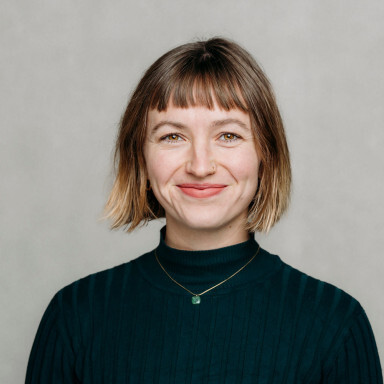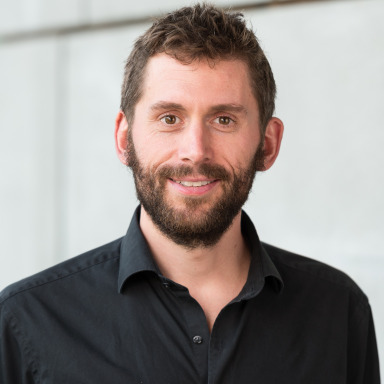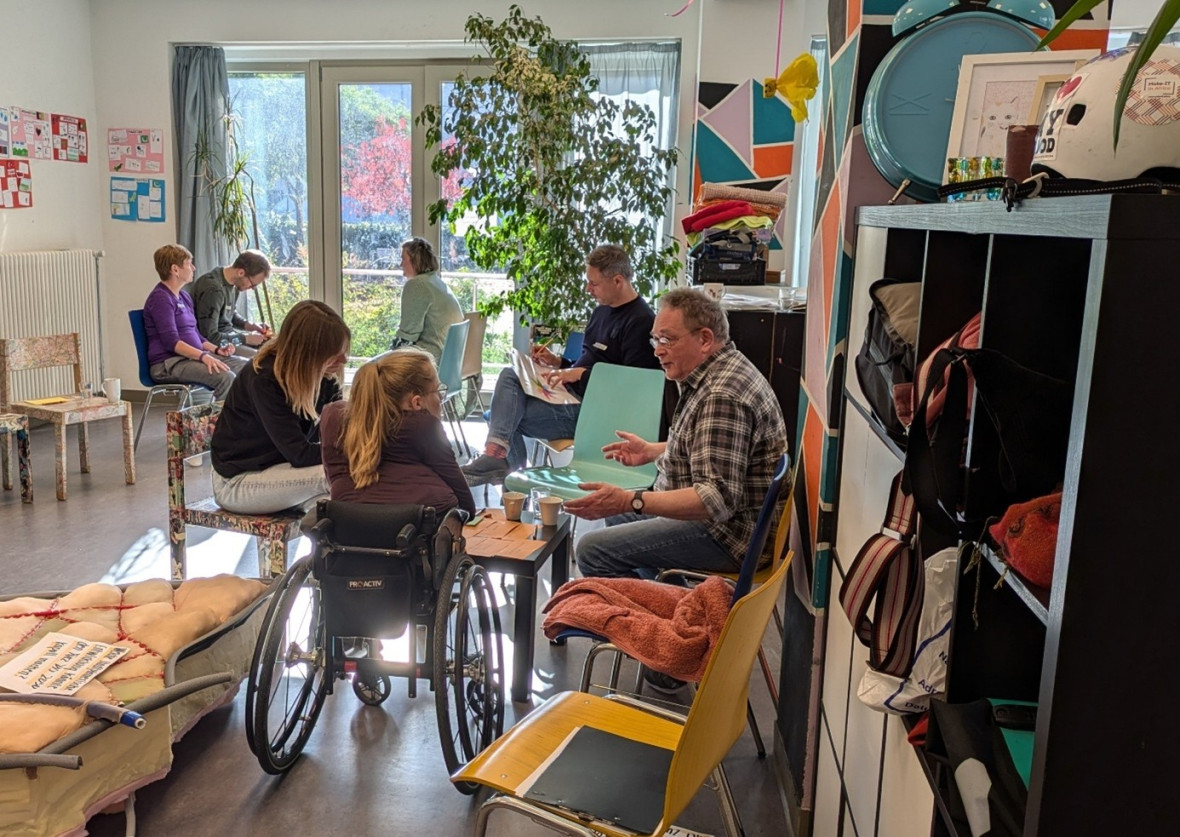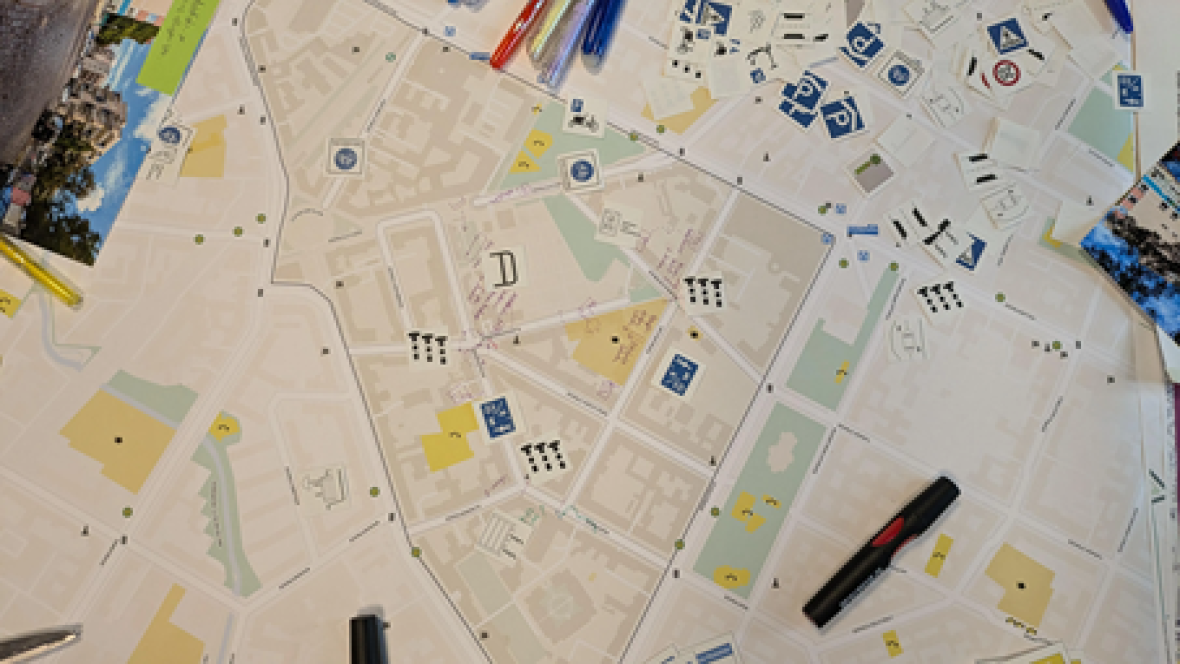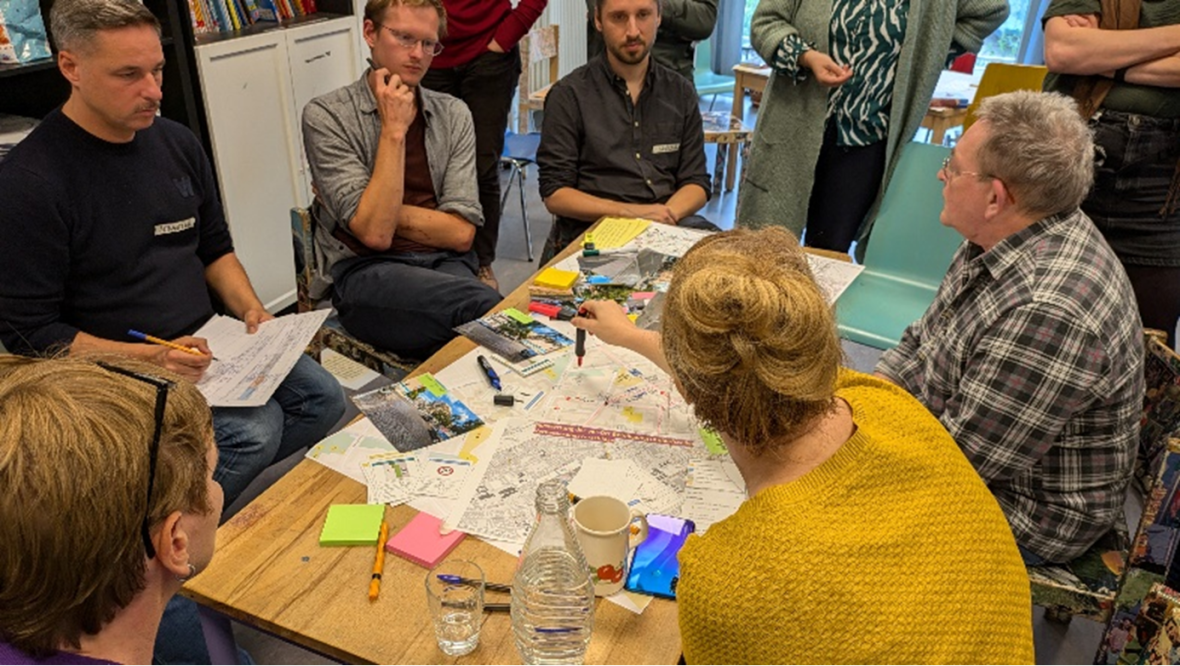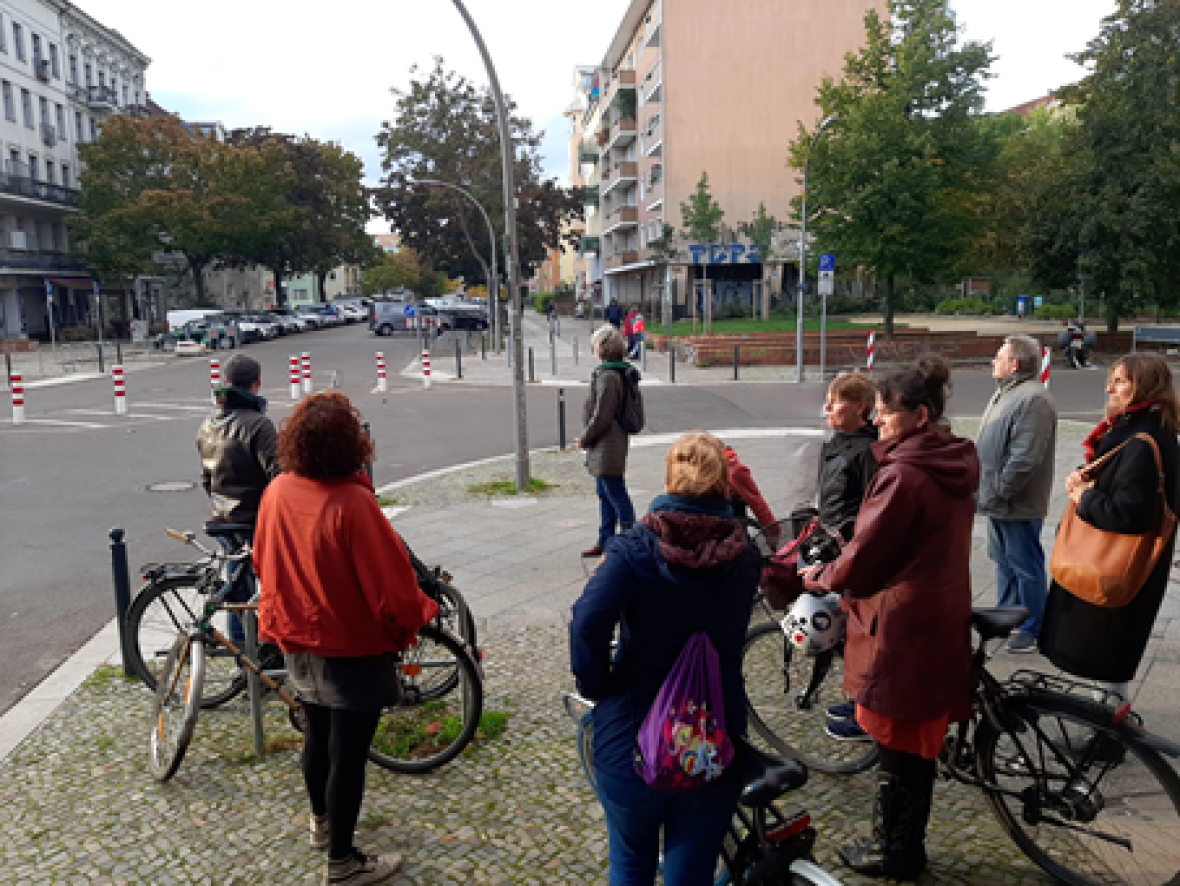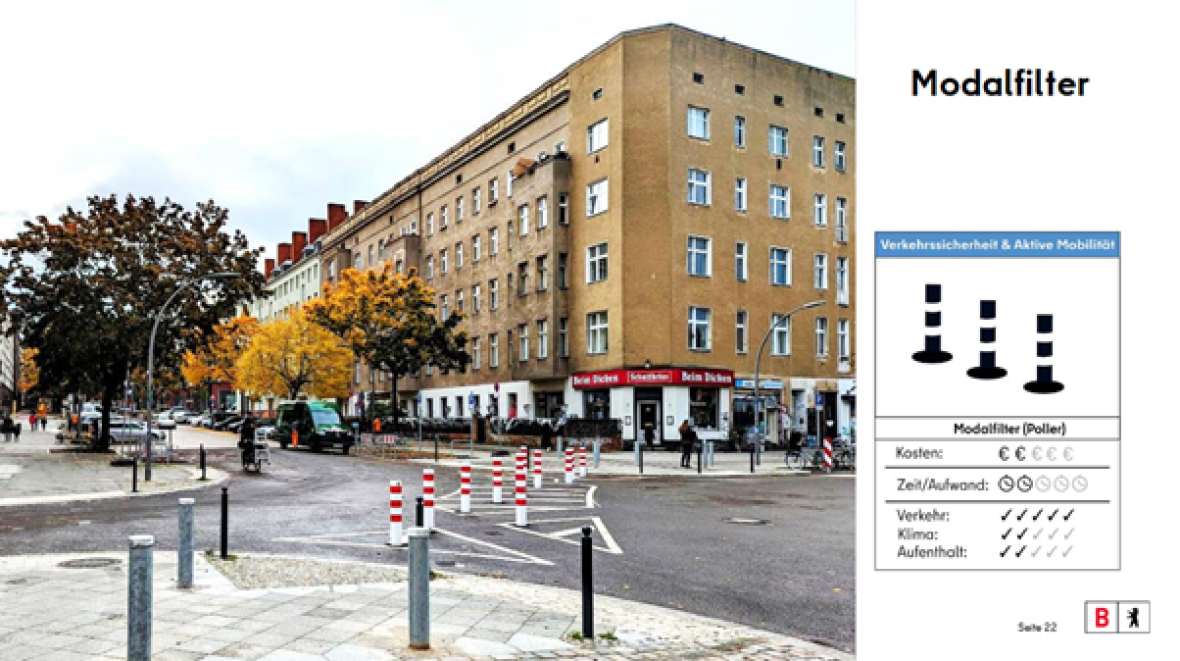Changing The City: One Conversation and Cup of Tea at a Time
18.11.2025
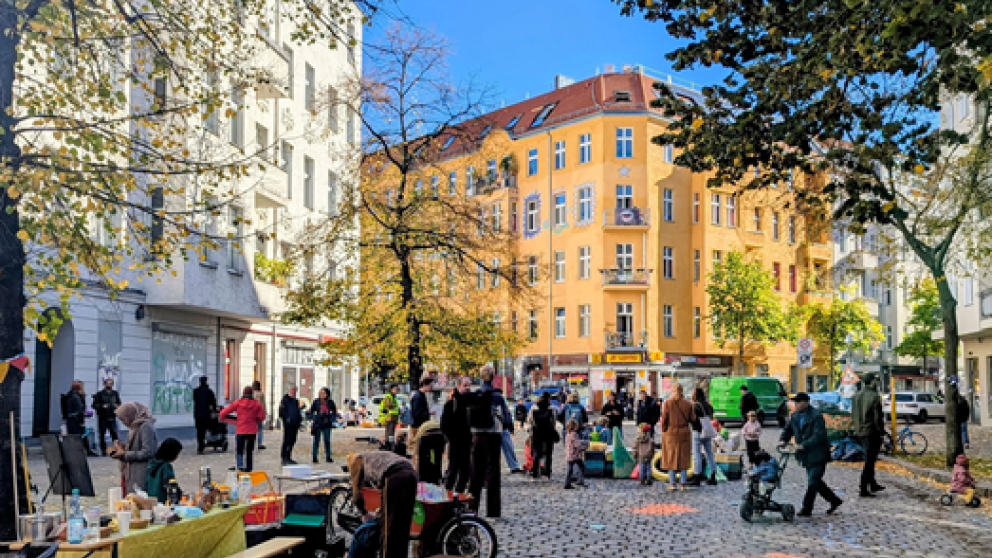
By Lea Fast, Immo Janssen, Nicolina Kirby, Luis Nacken und Dirk von Schneidemesser
Urban transformations cause tensions: Cities must become both more climate resilient and safer for pedestrians and cyclists. Yet many residents fear change and worry that their voices will be ignored. Surveys show that the public now favours putting people and nature ahead of cars and traffic noise. The decisive factor, however, is how transformations are carried out. In this fraught context, genuine citizen participation is essential.
The problem: Cities and authorities that have spent decades planning for the car centric scale now face a double task: they must reposition climate and social impact values at the heart of their work and become skilled communicators and facilitators of citizen participation. For many municipalities, genuine public involvement poses additional costs that they can barely afford.
The consequence: Local authorities often fail to prioritise participation and communication. And in the eyes of many citizens, participation processes frequently amount to little more than the belated announcement of decisions that have already been taken. At the same time, participation processes are becoming increasingly polarised and politicised in the media and in the mailboxes of public authorities, sometimes sparking fierce opposition.
The KlimaKieze project: In this fraught context we need better knowledge of which participation formats and processes actually work. Together with Berlin’s Mitte District Authority and the University of Heidelberg, RIFS has examined new approaches to planning and citizen participation in so called “Kiezblock” concepts – traffic calming and climate adaptation schemes for residential neighbourhoods. The study identified the types of participation that can bridge existing divides and deliver viable solutions, as well as those that, in the worst case, risk deepening the gaps.
Knowledge from the street
Informal community engagement offers opportunities to discuss mobility and urban planning more calmly and with far less polarization. The participation format centred on floating contact points - a cargo bike converted into an information stand bearing the banner “Traffic in the neighbourhood: What’s going well, where are the problems?” RIFS researchers gathered feedback over tea and hot apple juice. Even on the cold December days of a Berlin winter, several dozen residents from each neighbourhood stopped by, sharing everyday traffic and land use problems and suggesting practical solutions.
A woman in a wheelchair explained that she often has to take long detours because crossings are blocked by parked cars and there are no dropped curbs. An elderly gentleman, by contrast, would like the traffic lights in the neighbourhood to stay green longer for pedestrians. All contributions were recorded on sticky notes, after which residents were asked to identify the locations on a map of the area. An older lady reported that the lack of seating has long prevented her from meeting friends regularly. These conversations at the contact points provide local authorities with input from a broad cross section of the neighbourhood that is highly usable for planning.
Many people who otherwise lack the time, experience or capacity to take part in time intensive planning processes—whether because they are carers, work shifts, have limited mobility, or are very young or very old—are given a voice and are heard. For example, schoolchildren’s observations of hazardous crossings on their way to school were fed directly into the District Authority’s planning processes. This is a population group that stands to gain significantly from Kiezblock measures – in terms of their safety and autonomy – yet children are rarely involved in planning processes.
Outreach engages groups less likely to join participation processes
The inclusion of voices that are rarely heard in “traditional” participation processes is not an assumption. In several of the two surveyed neighbourhoods, more than 90 % of participants had never previously taken part in a public consultation (the overall figure across all sites was ≈ 70 %). A multilingual mediator—fluent in Turkish, Kurdish and English—played a key role in reaching these residents, and the proactive outreach turned many initially sceptical or disengaged neighbours into active Kiezblock planners.
What happens when neighbours talk
Participation formats that are more structured and demand a lot of time from participants also have their place in the development of Kiezblocks. One example are citizens’ assembly style neighbourhood councils. For this, up to 22 randomly selected residents spent a full weekend day working with the RIFS team and local authorities in Mitte District on the planning of a Kiezblock. Because the draw was random, the group displayed a wide range of backgrounds, prior knowledge and personal attitudes toward traffic calming and climate adaptation. Rather than asking them to outline their ideal future, participants were first asked to imagine the “perfect disaster”—the worst case scenario that could befall their neighbourhood. This exercise helped surface fears and priorities that later informed a more balanced, community driven design.
After everyone agreed that nobody really wants cluttered streets filled with parked cars, the first input was presented. Researchers from the University of Heidelberg shared the results of a household survey, which showed that a clear majority of residents supported the core measures that define Kiezblocks: Replacing parking spaces with green spaces, trees or places for the neighbourhood, creating safe routes to school and reducing through traffic.
The District Authority provided easy-to-understand information about the planning resources and processes: how much does a cycle lane cost? How long does it take to build a school zone? What advantages do modal filters have over speed bumps or "Residents only!" signs to keep through traffic out of the neighbourhood?
The use of modal filters—commonly called bollards—to block cars while still allowing pedestrians and cyclists to pass sparked intense debate. Unlike the starkly polarised arguments seen in the media, the final outcome emerged from lengthy, professionally facilitated consultations that produced a solution acceptable to all. The neighbourhood council’s recommendation to the District Authority retained the bollards, whose effectiveness at curbing through traffic was broadly acknowledged.
The format shapes the discussion
The media often highlight the anger of local business- and shop-owners, who fear that traffic calming measures will cut into their sales. Recent research, however, shows that the retail sector usually benefits from calmer streets. The concerns are nonetheless legitimate – many traders vastly over estimate the share of customers who arrive by car).
Experience shows that early, targeted communication can turn sceptical traders into collaborators, or at least calm their worries and correct the misconceptions that are sometimes amplified in the press (e.g., the persistent myth that neighbourhood blocks become completely inaccessible to cars). In our project we deliberately surveyed traders as a stakeholder group. One shop owner, for example, learned that his premises would still be reachable by car – contrary to his initial belief – and discovered that, as a resident, he had long wanted measures to curb speeding in the area. Even if participation does not turn him into a champion for traffic calming measures (which is not the primary aim of participation), a simple, respectful dialogue can create a clearer understanding of the project and help avoid later complaints, disputes and organised opposition.
The importance of proactive, early communication became evident when a housing cooperative with several thousand members was brought into the process only at a later stage. The co operative urged its tenants to use the online participation platform to vent their frustration about the delayed information. On the platform anyone could anonymously flag needs, problems and ideas on a map of the neighbourhood. While the District Authority did receive constructive, actionable suggestions, it was also faced hostility and abuse. In response, the District Authority organised an information event to explain the plans that had been adopted by the neighbourhood council. The attendees were largely the “usual suspects”: fully mobile residents aged roughly 30-75, predominantly male, who perceived themselves as having either a great stake to gain or a great loss from the proposals. The overcrowded school auditorium quickly turned into a stage for the politically fuelled media narrative that had been amplified by the tabloids—loud heckling, insults and a charged atmosphere left little room for genuine understanding across the divides.
Participation doesn’t have to be complicated or costly
In addition to the other formats, we also experimented with artistic forms of participation. As part of the project, RIFS Fellow Julika Gittner created a series of installations that invite children to explore the Kiezblock concept through play and to express their own perspectives on the spaces they inhabit (see the accompanying blog post for full details). The installations provided a natural entry point for short interviews with parents, allowing us to capture their views on the neighbourhood’s current situation.
In a world where every urban transformation project could be fully funded, a whole suite of tested formats would represent a gold standard. Yet effective participation can also be achieved with far fewer resources, for example through mobile contact points that provide inclusive, face to face engagement with a wide diversity of residents and generate highly usable planning data. The neighbourhood council, in turn, can translate polarised views into a sustainable democratic consensus. By contrast, a simple information event or an online survey can be set up quickly, but they offer little scope for genuine encounters and constructive dialogue; in a heated public climate they may even deepen existing divisions.
The key lesson is that skillfully combining complementary formats usually yields better participation outcomes, because any single method reaches only a limited audience and fulfils only part of the desired participation goals. Together, these approaches help transform participation from a bureaucratic chore into an opportunity for richer results, authentic dialogue and, when needed, the forgiveness of occasional missteps.
The discontinuation of Senate funding for Berlin’s Kiezblock programme in the middle of this year made this particularly evident. Although financing for the traffic planning and construction phases had already been secured, no money remained for the follow up design work. Consequently, the residents who had taken part in the neighbourhood councils reconvened in a workshop to develop concrete designs for the newly created vacant spaces, drawing on the motivation of local volunteers. Without that format, one of the two pilot neighbourhoods would now contain an empty lot—a public square without the resources or community capacity to maintain it.
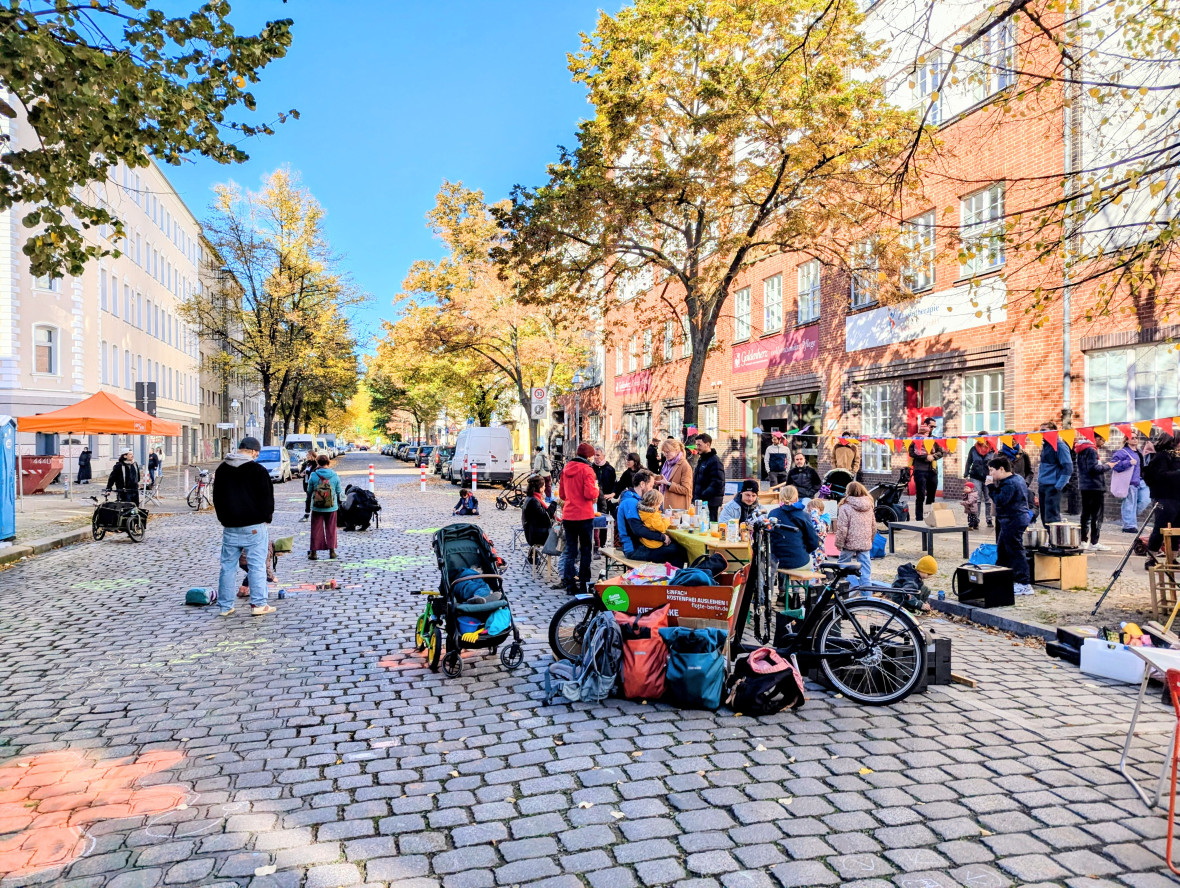
A spaghetti festival for the neighbourhood
When the first space became available a few weeks ago, residents joined forces with Stadteilkoordination Wedding and other community initiatives to host a “Spaghetti Festival” – an open buffet community gathering on the site. The event served as a welcoming prelude to further involvement and kicked off the planning process for the new town square. It quickly attracted new volunteers, and work began on creating additional green and recreational areas. RIFS Fellow Julika Gittner also contributed her interactive installations, further enlivening the space.
The experiences and insights gained in this project will also inform guidelines that are being developed for local authorities in Berlin, with the aim of enabling planners with few resources to embrace and harness the benefits of public participation.

